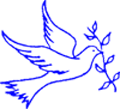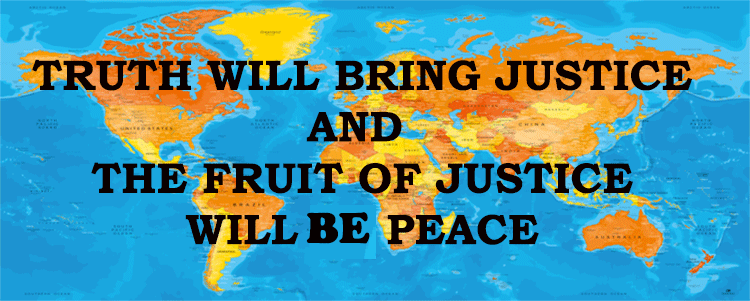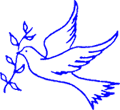READING HALLTHE DOORS OF WISDOM |
 |
 |
 |
PRINCE HENRY THE NAVIGATOR
XIX.
HENRY'S LAST YEARS
AND DEATH.1458-60.
While Cadamosto and Diego Gomez were carrying the Prince's flag
farther from the shores of Europe “than Alexander or Caesar had ever ventured”,
the Prince himself was getting more and more absorbed in the project of a new
Holy War against the Infidel.
The fall of
Constantinople in 1453 into the hands of the Ottoman Turks, had at least the
effect of frightening and almost of rousing Western Christendom at large. In
the most miserably divided of Latin states there was now a talk about doing
great things, though the time, the spirit for actually doing them, had long
passed by, or was not yet come. Spain, the one part of the Western Church and
State, which was still living in the crusading fervour of the twelfth century, was alone ready for action. The Portuguese kingdom in
particular, under Affonso V, had been keeping up a
regular crusade in Marocco, and was willing and eager
to spend men and treasure in a great Levantine enterprise. So the Pope's Legate
was welcomed when he came in 1457 to preach the Holy War. Affonso promised to keep up an army of twelve thousand men for war against the Ottoman,
and struck a new gold coinage—the Cruzado—to commemorate the year of
Deliverance.
But Portugal by
itself could not deliver New Rome or the Holy Land, and when the other powers
of the West refused to move, Affonso had to content
himself with the old crusade in Africa, but he now pushed on even more
zealously than before his favourite ambition, a land
empire on both sides of the Straits, and Prince Henry’s last appearance in
public service was in his nephew's camp in the Marocco campaign of 1458. In the siege of Alcaçer the Little,
the Lord Infant forced the batteries, mounted the guns, and took charge of the
general conduct of the siege. A breach was soon made in the walls, and the town
surrendered on easy terms, for it was not, said Henry, to take their goods or
force a ransom from them that the King of Portugal had come against them, but
for the service of God. They were only to leave behind in Alcaçer their Christian prisoners; for themselves, they might go, with their wives,
their children, and their property.
The stout-hearted
veteran Edward Menezes became governor of Alcaçer,
and held the town with his own desperate courage against all attempts to
recover it. When the besiegers offered him terms, he offered them in return his
scaling ladders that they might have a fair chance; when they were raising the
siege he sent them a message, Would they not try a little longer? It had been a
very short affair.
Meantime Henry,
returning to Europe by way of Ceuta, re-entered his own town of Sagres for the last time. His work was nearly done, and
indeed, of that work there only remains one thing to notice. The great Venetian
map, known as the Camaldolese Chart of Fra Mauro,
executed in the convent of Murano just outside Venice, is not only the crowning
specimen of medieval draughtsmanship, but the
scientific review of the Prince's exploration. As Henry himself closes the
middle age of exploration and begins the modern, so this map, the picture and
proof of his discoveries, is not only the last of the older type of plan, but
the first of the new style—the style which applied the accurate and careful
methods of Portolano-drawing to a scheme of the whole world. It is the first
scientific atlas.
But its scale is
too vast for anything of a detailed account: it measures six feet four inches
across, and in every part it is crammed with detail, the work of three years of
incessant labour (1457-9) from Andrea Bianco and all
the first coasters and draughtsmen of the time. In
general, there is an external carefulness as well as gorgeousness about the
workmanship; the coasts, especially in the Mediterranean and along the west
coast of Europe, would almost suit a modern Admiralty Chart, while its notice,
the first notice, of Prince Henry’s African and Atlantic discoveries is the
special point of the whole work.
There is a certain
disposition to exaggerate the size of rivers, mountains, towns, and the whole
proportion of things, as we get farther away from the well-known ground of
Europe; Russia and the north and north-east of Asia are somewhat too large, but
along the central belt, it is fair to say that the whole of the country west of
the Caspian is thoroughly sound, the best thing yet done in any projection.
No one could look
at Fra Mauro’s map and fail to see at a glance a picture of the Old World; and
the more it is looked at, the more reliable it will prove to be, by the side of
all earlier essays in this field. No one can look at the Arabic maps and their
imitations in medieval Christendom, whether conscious or unconscious (as in the
Spanish example of 1109), without despair. It is almost hopeless to try and recognise in these anything of the shape, the proportions,
or the distribution of the parts of the world which are named, and which one
might almost fancy it was meant to represent at the time.
Place the map of
1459 by the side of the Hereford map of 1300 or of Edrisi’s scheme of 1130 (made at the Christian Court of Sicily), or in fact beside any
of the theoretical maps of the thousand years that had gone to make the Italy
and the Spain of Fra Mauro and Prince Henry, and it will seem to be almost
absurd to ask the question: Do these belong to the same civilisation,
in any kind of way? What would the higher criticism answer, out of its
infallible internal evidence tests? Of course, these are quite different. The
one is merely a collection of the scratchings of
savages, the other is the prototype of modern maps. Yet the Christian world is
answerable for both kinds; it had struggled through ignorance and superstition
and tradition into clearer light and truer knowledge.
And when Greek
geography came to be reprinted and revived, this was in part at least a
consequence of that revival of true science which had begun in that very dark
time, the night of the twelfth century, where we are not likely to see any
signs of dawn till we look, not so much at what is written now, as at what the
poor besotted savages of the ages of Abelard and Bernard and Aquinas and Dante
have left to bear witness of themselves.
Between Henry’s
return from Alcaçer and his death, while the great
Venetian map was in making, two years went by, years in which Diego Gomez was
finding the Cape Verde islands and pushing the farthest south of European
discovery still farther south, but of the Prince's own working, apart from that
of his draughtsmen, we have little or nothing, but a
set of charters. These charters were concerned with the trade profits of the
Guinea commerce and the settlers in the new found lands off the
continent—Madeira, the Azores, the Canaries,—and have an interest as being a
sort of last will and testament of the Prince to his nation, settling his
colonies, providing for the working of the lands he had explored, before it
should be too late. Already on the 7th June, 1454, Affonso had granted to the Order of Christ, for the explorations “made and to be made
at the expense of the aforesaid Order”, the spiritual jurisdiction of Guinea,
Nubia, and Ethiopia, with all rights as exercised in Europe and at the Mother
house of Thomar.
Now on the 28th
December, 1458, Prince Henry granted “in his town” that “the said Order should
receive one twentieth of all merchandise from Guinea”, slaves, gold and all
other articles; the rest of the profit to fall to the Prince’s successor in this
“Kingdom of the Seas”" In the same way on the 18th September, 1460, the
Prince grants away the Church Revenues of Porto Santo and Madeira to the Order
of Christ, and the temporalities to the Crown of Portugal. It was his to give,
for by Royal Decree of September 15, 1448, the whole control of the African and
ocean trade and colonies had been expressly conferred upon the Infant. No ships
as we have seen could sail beyond Bojador without his
permit; whoever transgressed this forfeited his ship; and all ships sailing
with his permit were obliged to pay him one fifth or one tenth of the value of
their freight.
But the end was in
sight. The Prince was now sixty-six, and he had spent himself too strenuously
for there to be much hope of a long life in him. Of late years, pressed by the
increasing claims of his work, he had borrowed enormous sums from his half-brother,
the millionaire Duke of Braganza. Now his body failed him like his
treasures.
What we know of
his death is mainly from his body servant, Captain Diego Gomez, who was with
him at the last. "In the year of Christ 1460, the Lord Infant Henry fell
sick in his own town, on Cape St. Vincent, and of that sickness he died on
Thursday, November 13th, in the selfsame year. And King Affonso,
who was then at Evora with all his men, made great mourning on the death of a
Prince so mighty, who had sent out so many fleets, and had won so much from
Negro-land, and had fought so constantly against the Saracens for the Faith.
“And at the end of
the year, the King bade me come to him. Now till then I had stayed in Lagos by
the body of the Prince my lord, which had been carried into the Church of St.
Mary in that town. And I was bidden to look and see if the body of the Prince
were at all corrupted, for it was the wish of the King to remove it to the
Monastery of Batalha which D. Henry's father King
John had built. But when I came and looked at the body, I found it dry and
sound, clad in a rough shirt of horse-hair. Well doth the Church repeat ‘Thou
shalt not suffer thine Holy One to see corruption’.
“For how the Lord
Infant had been chaste, a virgin to the day of his death, and what and how many
good deeds he had done in his life, is to be remembered, though it is not for
me here to speak of this. For that would be a long tale. But the King Affonso had the body of his uncle carried to Batalha and laid in the chapel that King John had built,
where also lie buried the aforesaid King John and his Queen Phillipa, mother of
my lord the Prince, and all the five brothers of the Infant”.
He was brawny and
large of frame, says Azurara, strong of limb as any.
His complexion was fair by nature, but by his constant toil and exposure of
himself it had become quite dark. His face was stern and when angry, very
terrible. Brave as he was in heart and keen in mind,
he had a passion for the doing of great things. Luxury and avarice never found
lodgment within him. For from a youth, he quite left off the use of wine, and
more than this, as it was commonly reported, he passed all his days in unbroken
chastity. He was so generous that no other uncrowned Prince in Europe had so
noble a household, so large and splendid a school for the young nobles of his
country.
For all the best
men of his nation and still more those who came to him from foreign lands were
welcomed at his Court, so that often the medley of tongues and peoples and
customs to be heard and seen there was a wonder. And none who worthily came to
him left the Court without some proof of his kindness.
Only to himself
was he severe. All his days were spent in work, and it would not easily be
believed how often he passed the night without sleep, so that by his untiring
industry he conquered the impossibilities of other men. His virtues and graces
it is too much to reckon up; wise and thoughtful, of wonderful knowledge and
calm bearing, courteous in language and manner and most dignified in address,
yet no subject of the lowest rank could show more obedience and respect to his
sovereign than this uncle to his nephew, from the very beginning of his reign,
while King Affonso was still a minor. Constant in
adversity and humble in prosperity, my Lord the Infant never cherished hatred
or ill will against any, even though they had grievously offended him, so that
some, who spoke as if they knew everything, said that he was wanting in
retributive justice, though in all other ways most impartial. Thus they
complained that he forgave some of his soldiers who deserted him in the attack
on Tangier, when he was in the greatest danger. He was wholly given up to the
public service, and was always glad to try new plans for the welfare of the
Kingdom at his own expense. He gloried in warfare against the Infidels and in
keeping peace with all Christians. And so he was loved by all, for he loved
all, never injuring any, nor failing in due respect and courtesy towards any
person however humble, without forgetting his own position. A foul or indecent
word was never heard to issue from his lips.
To Holy Church,
above all, he was most obedient, attending all its services and in his own
chapel causing them to be rendered as solemnly as in any Cathedral Church. All
holy things he reverenced, and he delighted to shew honour and to do kindness to all the ministers of religion. Nearly one half of the
year was passed by him in fasting, and the hands of the poor never went out
empty from his presence. His heart never knew fear except the fear of sin.
XXTHE RESULTS OF PRINCE HENRY’S WORK.
|
 |
 |
 |
 |
 |
 |